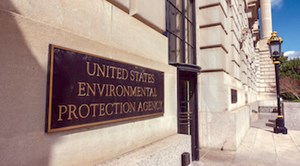EPA Outlines $7.4 Billion for Water Infrastructure Headed to States
WASHINGTON (AP) — States, Native American tribes and U.S. territories will receive $7.4 billion in 2022 to improve water quality and access, the first installment from the infrastructure bill that President Joe Biden signed into law last month, the Environmental Protection Agency said Thursday.

The legislation commits $50 billion for water and wastewater infrastructure over five years, with $15 billion allocated for removing lead pipes and $10 billion to address contamination from toxic chemicals frequently used in cookware, carpets, firefighting foams and other products.
The federal government cannot dictate how that money is spent, but the EPA says it is urging governors, mayors and other local administrators to prioritize sending money to historically underserved communities that have long faced challenges in accessing clean water.
“It’s no mystery as to who needs those resources the most,” said EPA Administrator Michael Regan, who recently visited low-income, largely minority communities in the South that have endured industrial contamination and water shortage problems.
Of the $7.4 billion headed to states, tribes and territories, $2.9 billion will help pay for the replacement of lead pipes and service lines, and $866 million is meant for addressing per- and poly-fluoroalkyl substances (PFAS) contaminants in water.
Sometimes called “forever chemicals,” PFAS have been found in public drinking water systems and private wells. In October, the EPA said it was working toward setting limits on PFAS in drinking water and requiring manufacturers whose products contain the chemicals to disclose how toxic they are.
The Biden administration initially proposed investing $45 billion as part of the bipartisan infrastructure deal to eliminate every lead pipe and service line in the country. At the time, water experts said that was a realistic estimate for what it would cost to map out and remove the pipes thought to remain underground. For decades, lead pipes have posed a risk for contaminated water in schools and homes.
Still, experts say the $15 billion included in the final version provides a historic chance to address the problem.
“This gets us a third of the way there which is ... more than the federal government has ever done to help communities remove these these really deadly lead service lines,” said John Rumpler, senior attorney with Environment America, after the bill passed in November.
“It’s going to take a concerted effort by local officials and community activists and state agencies to ensure that this money is used as effectively as possible,” he said.
The EPA said nearly $44 billion of the $50 billion for water in the infrastructure deal will go through State Revolving Funds, which were established as a way to provide low-interest loans to cities, counties and utilities for investments in water and sanitation infrastructure.
A recent report by researchers at the University of Michigan found that smaller communities and more racially diverse ones were less likely to receive money from the Drinking Water State Revolving Fund, according to an analysis of national and state-level data between 2011 and 2020.
They also found that communities with lower median household incomes were somewhat more likely to receive funds.
Related News
From Archive

- Glenfarne Alaska LNG targets late-2026 construction start for 807-mile pipeline project
- U.S. water reuse boom to fuel $47 billion in infrastructure spending through 2035
- $2.3 billion approved to construct 236-mile Texas-to-Gulf gas pipeline
- Major water pipe break in Puerto Rico hits over 165,000 customers
- Potomac River Tunnel project enters construction phase beneath Washington, D.C.
- Pennsylvania American Water launches interactive map to identify, replace lead water service lines
- Trump's tariffs drive $33 million cost increase for Cincinnati sewer project
- Utah city launches historic $70 million tunnel project using box jacking under active rail line
- Tulsa residents warned after sewer lines damaged by boring work
- Fatal trench collapse halts sewer construction in Massachusetts; two workers hospitalized



Comments